When we wrote about the Oculus Link beta in November, I called it a “hardware hack.” Exciting, yes, but definitely not elegant. Link allowed you to turn your standalone Oculus Quest headset into a PC-ready Oculus Rift equivalent, as promised. But the only cables ready for the initial software rollout were off-the-shelf Anker cables. They were short, stiff, and worst of all stuck straight out of the side of the Quest like an arrow.
It was a tragedy waiting to happen. One good yank, and you might destroy your Quest forever. Or at least that’s how it felt.
The Oculus Link software is still in beta, but the Link hardware much less so. In January, Oculus finally released its bespoke Link cable. It’s going to cost you—a lot—but it’s worth it.
Midas touch
How much will it cost you? We might as well cover it up front, because it’s the proverbial elephant. Oculus is selling the Link cable for…well, I’ll wait for you to take a big drink of water first. Go ahead, get the spit-take prepped.
Ready?
It’s $80.
Ah damn, and just like that your desk is soaked. I’ll pause again so you can get some towels and dry everything off.
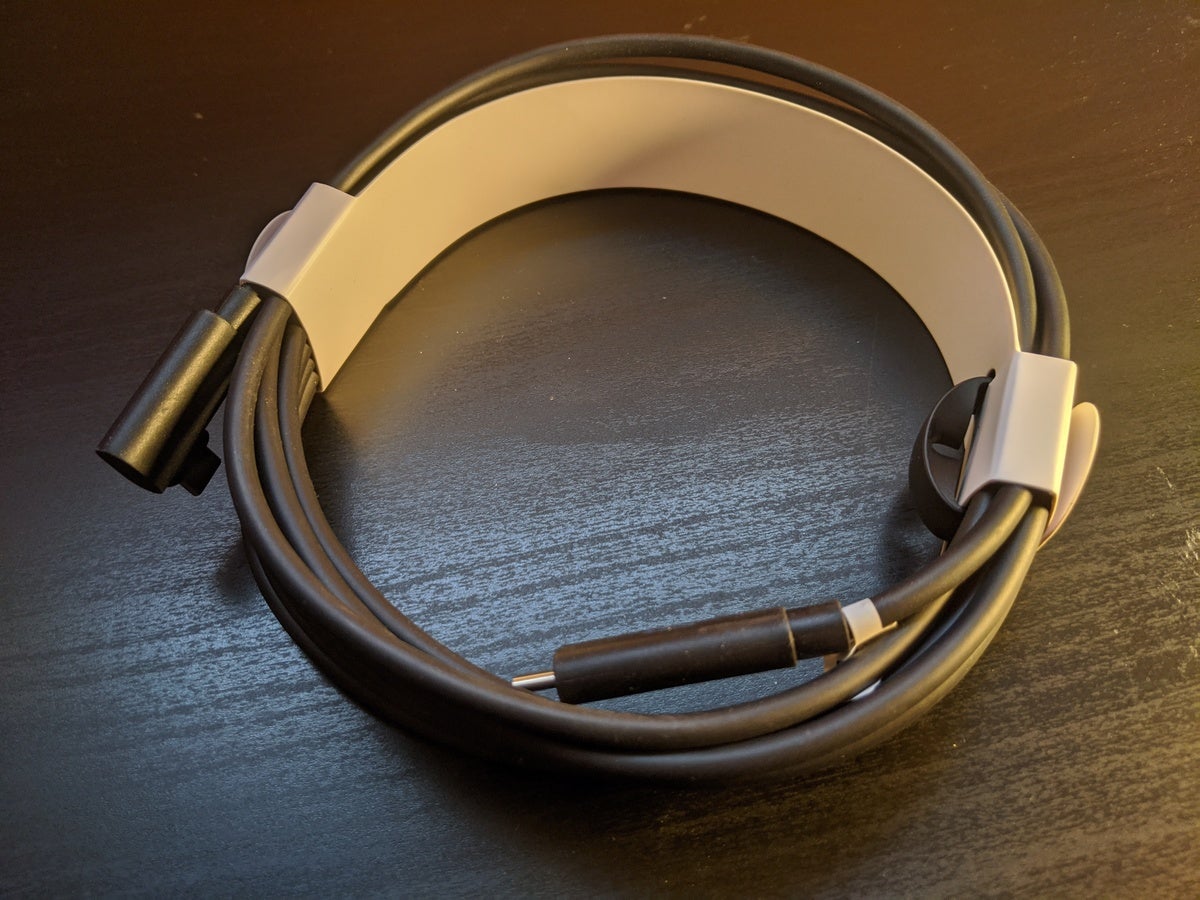 IDG / Hayden Dingman
IDG / Hayden DingmanBut yeah, jokes aside, Oculus is selling an $80 USB-C cable. That’s uh, a lot of money. The Anker cables we tested in November cost $18 on Amazon. What changed?
Well first off, and this is the easiest part to grasp, Oculus’s cable is quite a bit longer. The Anker cable that Oculus recommended tops out at 10 feet, or a little over three meters. That sounds long, but it’s really not—especially if your USB 3.0 ports are confined to the rear of your PC. That means you’re wasting at least a foot or two running it back, and then an additional two or three feet covering the vertical distance to the headset. When all is said and done, you’ve got maybe five feet of actual usable cable.
The official Oculus Link cable is five meters, or around 16 feet. That’s the same length as the tethered Oculus Rift S cable, and only slightly shorter than the Valve Index cable. In other words, it’s a fairly standard length for tethered VR, and should be more than enough for most people’s setups. The Link cable spans my room with slack to spare.
“Okay, so it’s long. Great—but $80?”
I know, it still seems like a lot. Not all USB-C cables are the same though, a lesson people hopefully learned when Oculus specified which cable to buy for the Link beta in November. And in this case, appearances are deceiving.
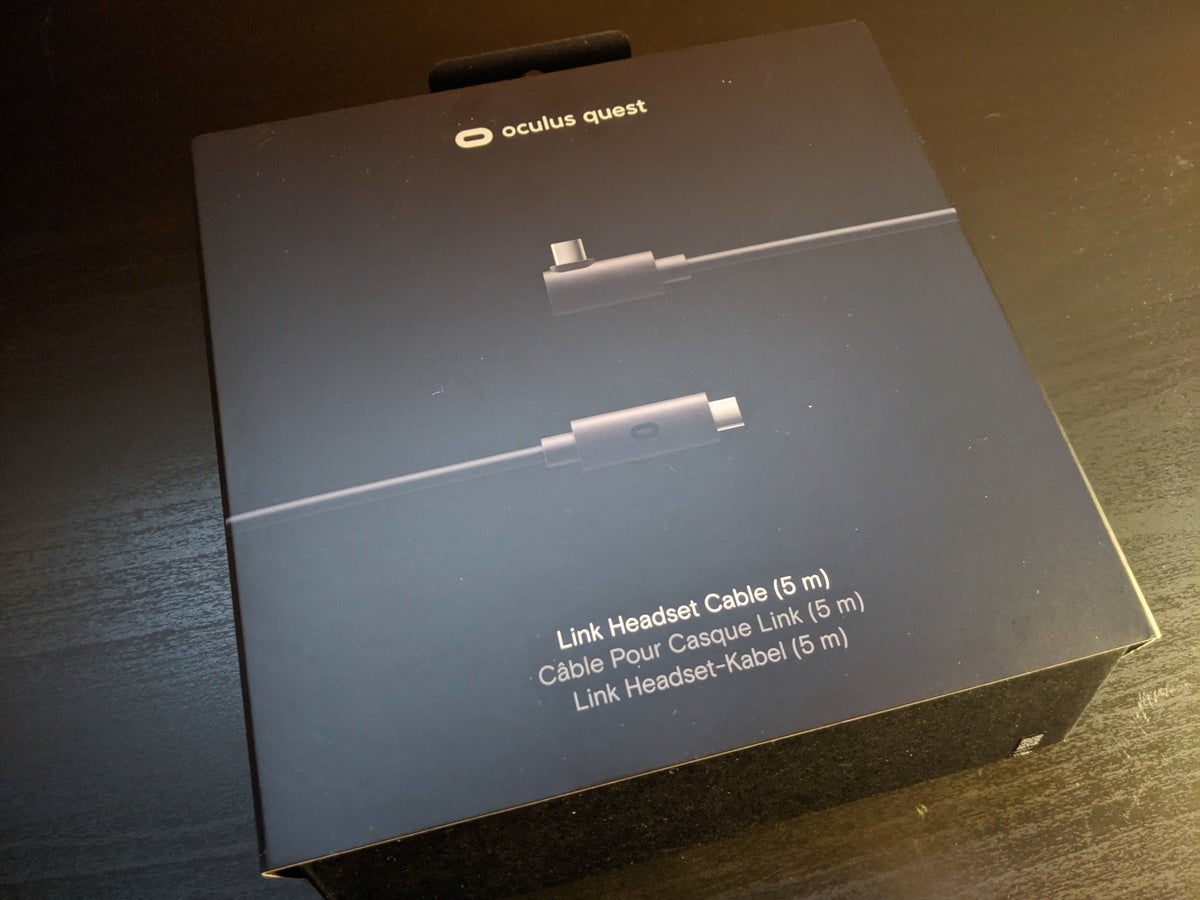 IDG / Hayden Dingman
IDG / Hayden DingmanThe official Link cable isn’t just a longer version of the aforementioned Anker cable. Anker’s cables are copper-based, and top out at 10 feet because that’s the recommended maximum length for a passive (a.k.a. non-powered) USB 3.1 cable. Past that, the signal begins to degrade.
There are third-party active cables that are Quest compatible though, and USB extender cables that are also Quest compatible. In other words, there are ways to get around copper’s limitations, and for cheaper than the official Link cable.
Oculus skirts the issue entirely though by using fiber optic. It’s lighter, it’s less stiff, and it’s not susceptible to data loss at 15 feet. Problem solved, right?
“But wait,” you might say, “there are other fiber optic USB-C cables available on Amazon as well. And for cheaper!” Again, correct. USB-C is an absolute nightmare though. I cannot stress enough, all USB-C cables are not the same. In this case, the most important aspect of the official Link cable is that it’s not just fiber optic, but fiber with a parallel copper line for charging. You can’t carry electricity over fiber, and so most of the third-party fiber cables you’ll find will work with Quest for data, but won’t keep it charged. You’ll have to stop playing and plug it in every two hours or so. Oculus’s cable is the only one I know of that provides both data and power in a single 15-foot cable.
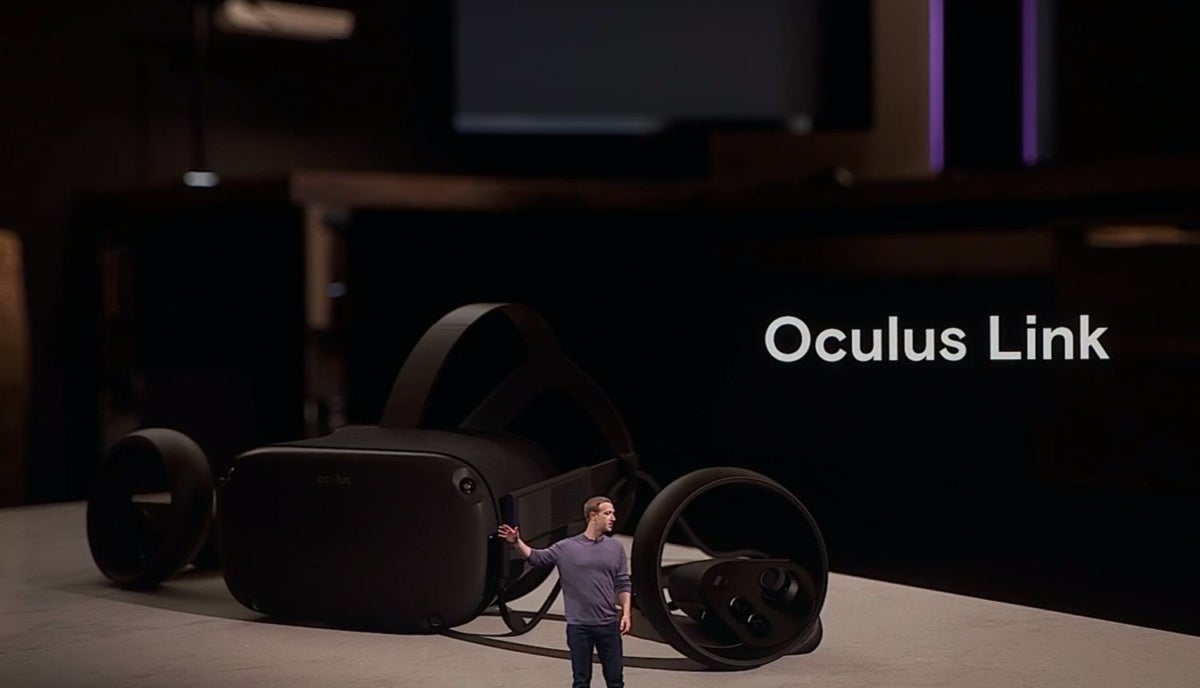 Facebook
FacebookI know, it’s confusing as hell—so let’s summarize. If you want cheap, you can go with a copper cable. They’re stiff, they’re heavy, and compatibility is a bit of a crapshoot. They work though, and can be had for as cheap as $20 or $30. You can also get a third-party fiber cable for around $50, which will work but won’t keep the headset charged.
Or you can just pay the $80 and get a cable that works. It really is that simple, in my opinion. The Link cable’s price is hard to swallow, but when you know why it costs that much? Slightly less so. It’s the only solution that accounts for everything, a long and supple cable that also keeps the Quest charged while you’re playing.
It also terminates in a perpendicular jack, so no more arrow-sticking-out-the-side look. And Oculus includes a little plastic clip so you can run the cable back along your head and drop it over your shoulder, essentially mimicking the Rift S/Index cable routing. This keeps the weight off your face, though it also makes the setup a bit more finicky than just plugging in the cable itself.
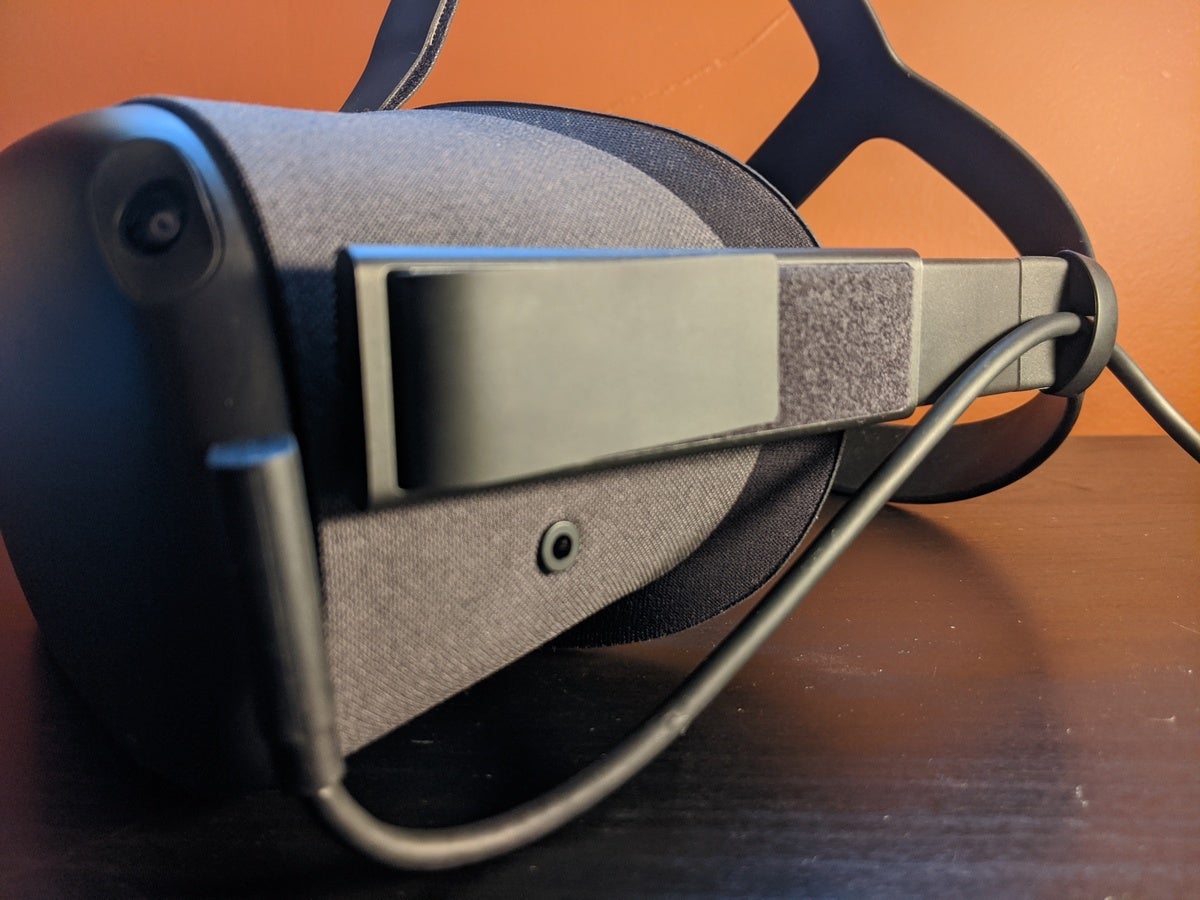 IDG / Hayden Dingman
IDG / Hayden DingmanMy other annoyance? The Link cable is USB-C to USB-C, and doesn’t ship with an adapter. That could be frustrating for anyone with a PC (or at least a motherboard) more than a couple years old—including the “Oculus-Ready” PCs sold alongside the original Rift launch in 2016. I happened to have a USB-C port on my Nvidia GeForce RTX 2080 Ti, but that was a lucky break because otherwise I would’ve needed to find an adapter.
Still, the hardware’s come a long way in a short time. The software? Slightly less so. Link is still in beta, and rightly so. It should be as easy as plugging in the Quest and going, but alas, no.
I already detailed some of my issues with setting up Oculus Quest with the Link software in November, where mismatched betas led to the PC and headset not seeing each other. Oculus has sorted that aspect out at least, and I didn’t worry too much about updates this time.
And yet I still broke the entire setup process. I don’t know how, but suspect it had something to do with the order of operations. Plugging in Quest, plugging the cable into my PC, turning on Quest—one of these steps apparently happened in an order Oculus (or my PC) didn’t like, and I spent upwards of 15 minutes troubleshooting why my computer couldn’t even see the headset.
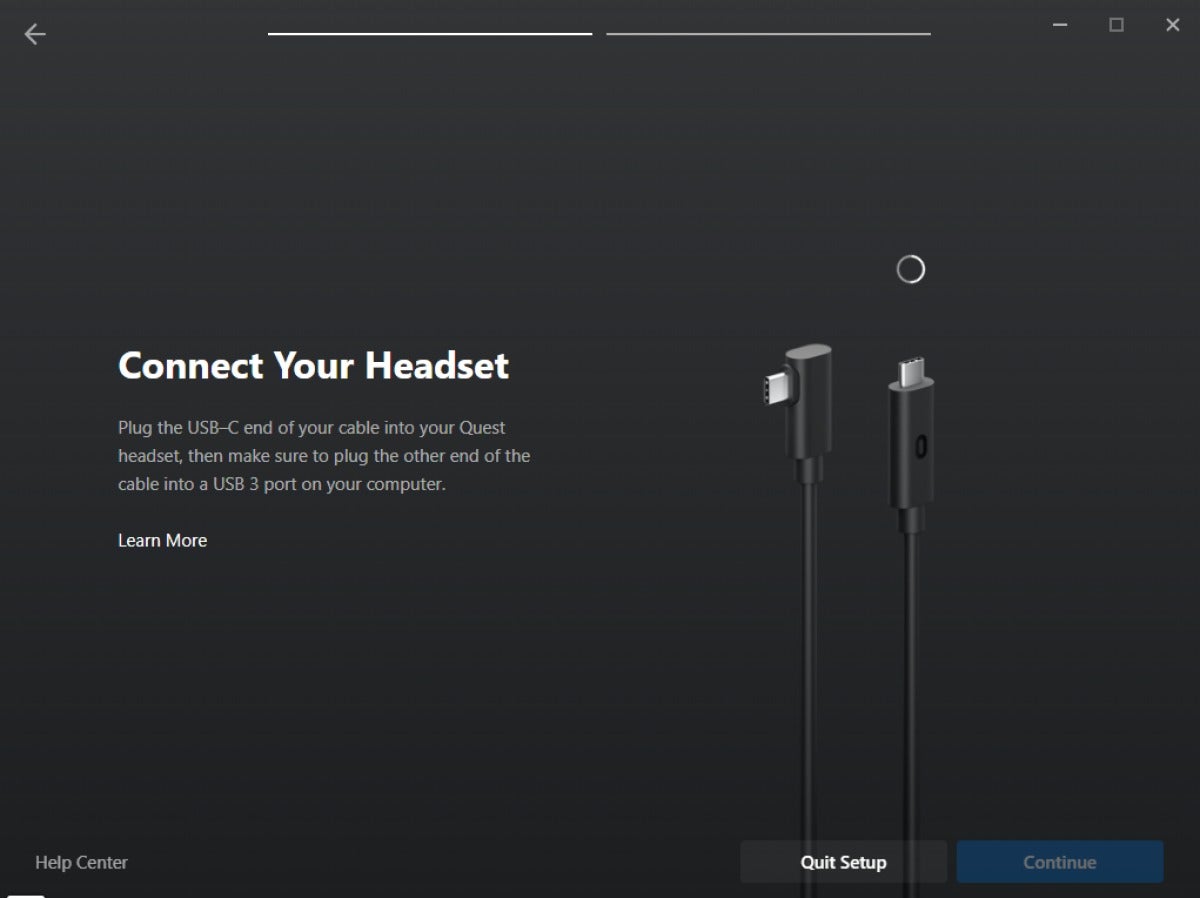 IDG / Hayden Dingman
IDG / Hayden DingmanThe solution? As so often happens, restart everything.
Still, Quest and Link simply aren’t as foolproof as a dedicated PC headset like the Rift S or Index. Which is not to say the Rift S and Index are completely infallible. I’ve had to troubleshoot those as well. There are simply fewer points of failure when you’re using a device exactly as intended, rather than hacking an untethered VR headset to work tethered.
That said, I still can’t imagine buying an Oculus Rift S anymore. Reviewing the Link beta in November, I called Quest a “best of both worlds miracle.” Two months later, I still feel the exact same way. The freedom to play full-fledged VR experiences untethered made Quest a game-changer, but the ability to run higher-fidelity PC experiences as well? To play Lone Echo and Asgard’s Wrath and so forth with full PC-powered visuals on a headset that you can also pack up and take on the road when you’re done? It really is incredible.
There’s still a place for Valve’s Index, as a premium VR experience with the best graphics, the best tracking, the best audio, and so on. But Quest is probably closer to VR’s future, and this new Link cable is the missing piece of the puzzle.
Bottom line
So yeah, I know: $80 is a lot to spend on a cable. It’s one-fifth the price of the Oculus Quest itself! Wild!
It really is worth it though. Oculus Link still needs some polishing, but it’s no longer the hardware that’s lacking. With Oculus’s official cable and that tiny plastic clip, Quest feels almost like a proper tethered headset, like it was meant to be used this way. And then you can unplug it and walk away from your PC at any time. Amazing, I tell you.
There are other solutions, many of them cheaper, but all compromised in some way. Chances are if you’re already invested in Quest and a powerful gaming PC? You can afford the proper cable. Make your life a little easier. The official Oculus Link cable is worth every penny.
This story, “Oculus Link review: This $80 cable is worth every penny to turn Quest into a Rift rival” was originally published by

